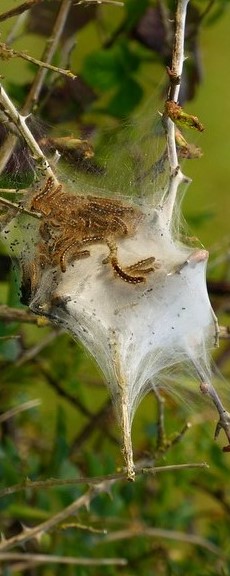Established invasive pest species are exotic insects that have naturalized in the region after many years. These pests cause damage to several species of tree in northeastern forests. In comparison to novel invasive pests, established invasives often have a predictable life cycle that is easy to anticipate and overlaps with the life cycles of native predators. Therefore, established invasives cause disturbance in forests, but natural ecosystem dynamics can help to regulate uncontrolled spread. These species include the Lymantria dispar and the Browntail Moth.
Browntail moth is a non-native invasive species originally introduced to North America in the late 1890s. Since initial infestations after its introduction, browntail moth has caused little damage in the northeastern forest until the last few years. Using the 100 years of data aggregated in the FEMC Northeastern Forest Health Atlas we extracted records of damage attributed to browntail moth across the region and assessed outbreak events using annual forest health reports.

The outbreak that started in 2015 is the only severe outbreak of browntail moth in the aerial survey data record.
There is a significant increase in the overall trend in the total acres damaged by browntail moth.The only year with damage categorized as mortality in the aerial detection survey record was 1997, causing the overall trend to decrease
| Data Program | Years | Org | Data Products |
|---|